Pruning grapes in spring and proper bush formation
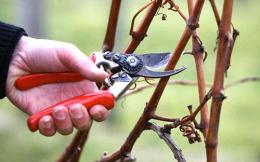
To increase the amount of harvest grapes, in the spring it must be trimmed. This is necessary not only for high yields, but also to improve the taste of the bunches. In addition, the ripening of grapes is accelerated and the care of fruit-bearing bushes is simplified. Pruning should begin in early March, when the air temperature reaches + 5 degrees.
Content:
- Main features of pruning
- How to prune grapes in spring
- How to properly form a young bush
- Types of grape bush formation
- Pruning grapes for fruiting
Main features of pruning
First of all, you need to leave four buds on each knot. This is the so-called winter insurance. About twelve buds are left on the fruit shoot so that they can form large inflorescences. During the pruning process, you need to ensure that all the cuts are on the inside of the shoots of the bush. Thus, the bush will overgrow faster from the inside. In order not to impede the flow of sap of the grape branches, the cuts should be smooth. In this case, pruning the grapes helps to properly form the bush.
The main advantage of spring pruning of grapes is that during the winter period the cutting sites are corked and at the beginning of the growing season the grapes “do not cry.”
Also, trimmed bushes are easier to cover for the winter. This agrotechnical technique promotes better growth and fruiting of grapes.If you don't pruning, an excess number of shoots will appear on the bush, which will thicken the bush and close the inflorescences, preventing them from being pollinated. As a result of inadequate nutrition of the bush, small berries with loose clusters will be formed. Most often, only young grape bushes are pruned in the spring.
How to prune grapes in spring
When removing annual shoots, pruning should occur at the very base, without the formation of stumps. Cuts on the shoots should be smooth and even. This ensures quick and easy healing of wounds, and the absence of stumps prevents the appearance of fatty shoots. To prune grape bushes, a well-sharpened pruner is used, the stop of which must be positioned towards the part of the shoot to be removed.
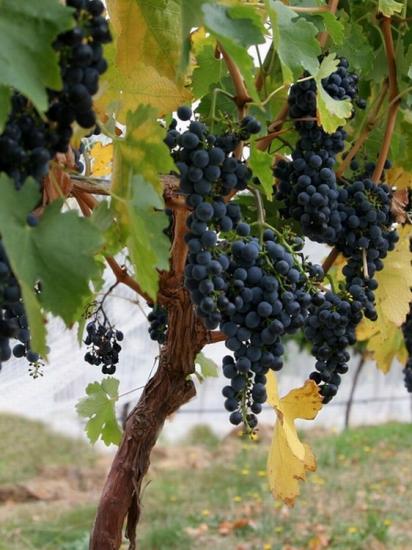
All cuts and wounds should be left on the inside of the vine. This is due to the fact that internal cuts always overgrow faster. Also, when pruning, you need to ensure that wounds located close to each other do not merge. Basically, you need to prune only well-developed and fruitful branches, otherwise the harvest may not be high. But you should not use too thick overdeveloped shoots, the thickness of which exceeds 12mm.
The thicker the shoots, the longer they need to be cut. And thin shoots are cut to a short length. When pruning replacement knots, you need to choose only those on which the first eye is on the outside. The fruitful vine should be pruned into 10-11 buds, which will allow the edge to develop well. kidney. To prevent the death of the lower bud of the fruiting vine, the cut should be made above the diaphragm of the branch.
How to properly form a young bush
When arranging vineyards, the following materials are used: vegetative seedlings, cuttings, layering, seedlings from shkolka. The main task when growing grapes is to obtain strong shoots, the thickness of which should be at least 6 mm. You need to form a grape bush a year after planting it. When forming, you should adhere to certain rules. When creating boles and cordon sleeves, you need to use the most mature vine.
Video on how to form a grape bush and how to prune it:
When forming low trunks, the required height is first established. The shoulders of cordons are created using the same principle. If the bush is formed over several years, then during annual pruning it should be raised to a certain height so that the wounds from the cuts are constantly at the same level. This ensures complete movement of all nutrients.
Types of grape bush formation
Standard alignment. Mainly used for non-covering varieties grapes When the first spring comes after planting, the grape bush needs to be cut off by one or two eyes, eliminating all shoots. Throughout the summer, it is advisable to grow two massive shoots. For the second spring, only one, but fully formed shoot is retained, which needs to be shortened by two more eyes.
It is from this shoot that the standard will be created, and the second shoot will be used as a backup when the main shoot dies. With the onset of the third spring, the standard shoot is shortened to a certain level (depending on desire). The remaining shoots should be cut out, leaving only the top two, from which the sleeves will be formed.
In the fourth year, in spring, the upper sleeves are shortened, based on the characteristics of a particular variety. Also, throughout the summer, massive shoots grow, which should be located at a distance of 20 cm from each other. In the fifth spring, all shoots created over the past summer should be cut off. In this case, you should leave two eyes on which you need to form several fruit links. When the sixth spring comes, it is necessary to form fruit links, while cutting off the lower shoot into several eyes.
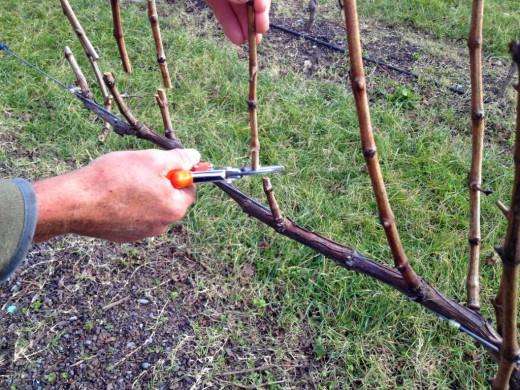
Formless formation. Used in growing cover grape varieties. Planted in spring seedling not trimmed. All the shoots that grow on it bend down to the ground and take shelter for the whole winter. When spring comes, all shoots need to be cut off. To fully develop a grape bush, such actions must be carried out over three years.
Pruning grapes for fruiting
When pruning for fruitfulness, it is necessary to prune the fruit vine right up to the replacement knot. In the future, instead of the old vine, two new ones will grow on this branch. The vine that is closer to the sleeve needs to be cut into two buds. In turn, the second vine must be cut long. Throughout the summer, a new fruit ring will grow on the branch.
When pruning for fruitfulness, you should always remember that only the lower part is always pruned. vine, which is considered a replacement knot. Even if not two, but three or even four shoots grow on a branch, the two strongest ones will later be selected, which in the future will be able to please with their excellent harvest.

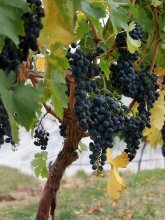
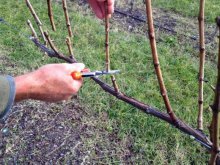

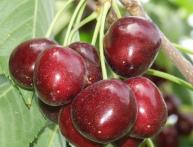

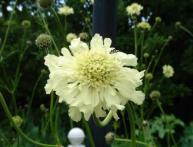
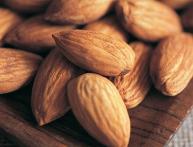
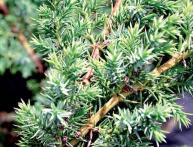
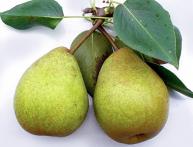
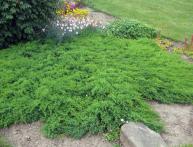
Comments
The article turned out to be very useful for me. In the old fashioned way, I cut off only 3 or 5 buds.It turns out there are so many nuances in pruning grapes, now I’ll know. In the future I will be more attentive to grapes - after all, I want a big harvest.